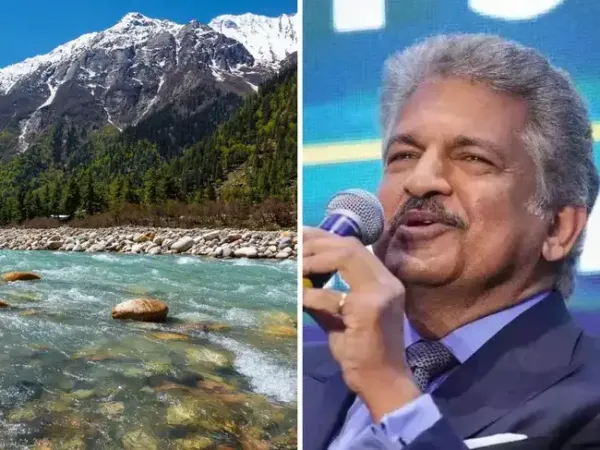Is it a painting? A digital render? Or just an untouched marvel of nature? According to industrialist Anand Mahindra, it’s the last one — and he’s not the only one stunned. The business tycoon recently shared a breathtaking image of the last inhabited village near the Indo-Tibetan border in Himachal Pradesh, captured by photographer Divya L Chaitanya. The ‘mesmerising’ photo has sent the internet into a frenzy. Can you guess the place?
Anand Mahindra shared the photo of Chitkul. With its turquoise Baspa River snaking through snow-capped peaks, the shot looked almost too perfect to be real. “Nature’s brush or digital magic?” Mahindra mused on X. “But the image is raw and untouched… reminding us that NO artist can outpaint nature’s canvas.”
According to Incredible India’s official page, Chitkul is deeply committed to sustainability. Locals actively engage in reforestation, plant native trees to protect biodiversity, and promote organic farming with minimal pesticide use. Plastic is shunned, and eco-friendly alternatives are encouraged to protect the pristine environment.
For adventurers, Chitkul is a gateway to challenges and rewards. The Kinnaur Kailash Parikrama trek — a sacred circumnavigation of the Kinnaur Kailash mountain — draws spiritual trekkers and mountaineers alike.
Anand Mahindra shared the photo of Chitkul. With its turquoise Baspa River snaking through snow-capped peaks, the shot looked almost too perfect to be real. “Nature’s brush or digital magic?” Mahindra mused on X. “But the image is raw and untouched… reminding us that NO artist can outpaint nature’s canvas.”
But what exactly makes Chitkul so magical?
Tucked away at 3,450 meters above sea level, Chitkul is more than just scenic — it’s a blend of raw natural beauty, cultural richness, and ecological mindfulness. The Baspa River, which features prominently in the viral photo, winds gracefully through the village, feeding its terraced fields that grow everything from apples to barley. Surrounded by the majestic Himalayan ranges, the area boasts crisp mountain air, alpine meadows, and a thriving array of flora and fauna that reflect the region’s rich biodiversity.According to Incredible India’s official page, Chitkul is deeply committed to sustainability. Locals actively engage in reforestation, plant native trees to protect biodiversity, and promote organic farming with minimal pesticide use. Plastic is shunned, and eco-friendly alternatives are encouraged to protect the pristine environment.
For adventurers, Chitkul is a gateway to challenges and rewards. The Kinnaur Kailash Parikrama trek — a sacred circumnavigation of the Kinnaur Kailash mountain — draws spiritual trekkers and mountaineers alike.








